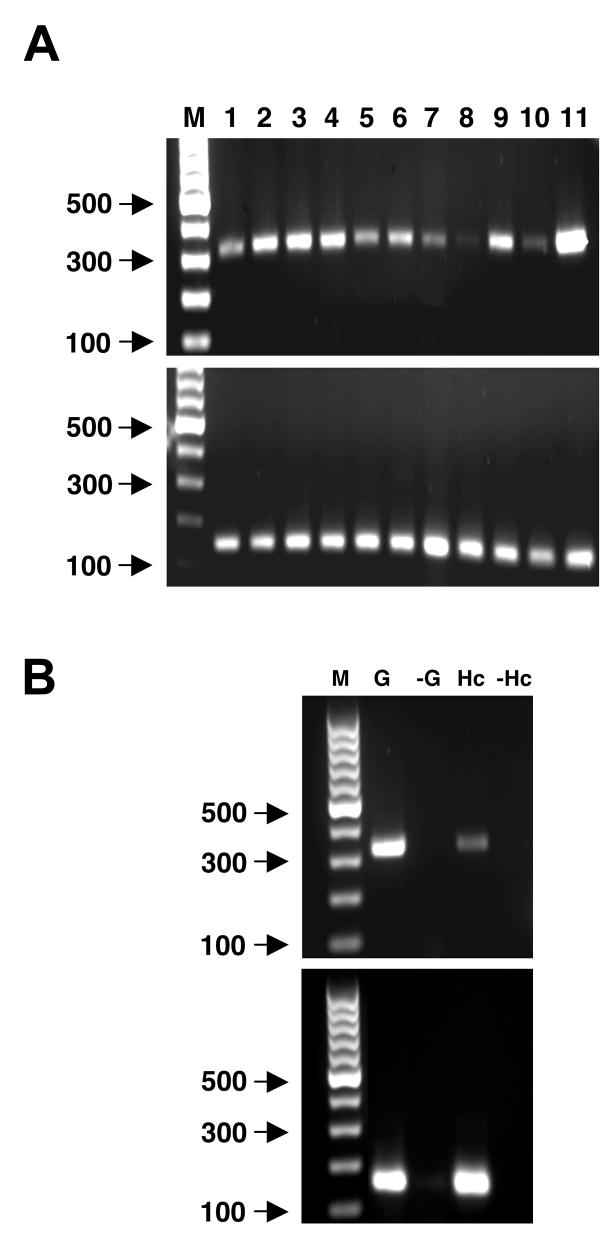Fig. 4.
Relative expression of Es-C3 in Euprymna scolopes. (A) Top: the relative expression of the complement C3 transcript in cDNA pools of whole juveniles and adult squid tissues; bottom: the corresponding loading controls using the ribosomal protein L21. Lanes: M = standard bp markers; juvenile squid, 1–3: 1 = whole hatchling, 2 = whole 48-hour nonsymbiotic animal, 3 = whole 48-hour symbiotic animal; adult tissue samples, 4–11: 4 = whole light organ, 5 = light organ without symbiont-containing central core, 6 = symbiont-containing central core, 7 = white body, 8 = hemocytes, 9 = mantle, 10 = arm, and 11 = gills. (B) Confirmation of Es-C3 transcript in hemocytes. Gill cDNA was used as a positive control for Es-C3 and L21. G and Hc, gill and hemocyte cDNA, respectively; -G and -HC, control reactions run with no reverse transcriptase to assess genomic DNA contamination in gill and hemocyte cDNA, respectively. Results shown are representative of a minimum of three independent and separate RNA extractions and PCR procedures for each sample in the figure.

